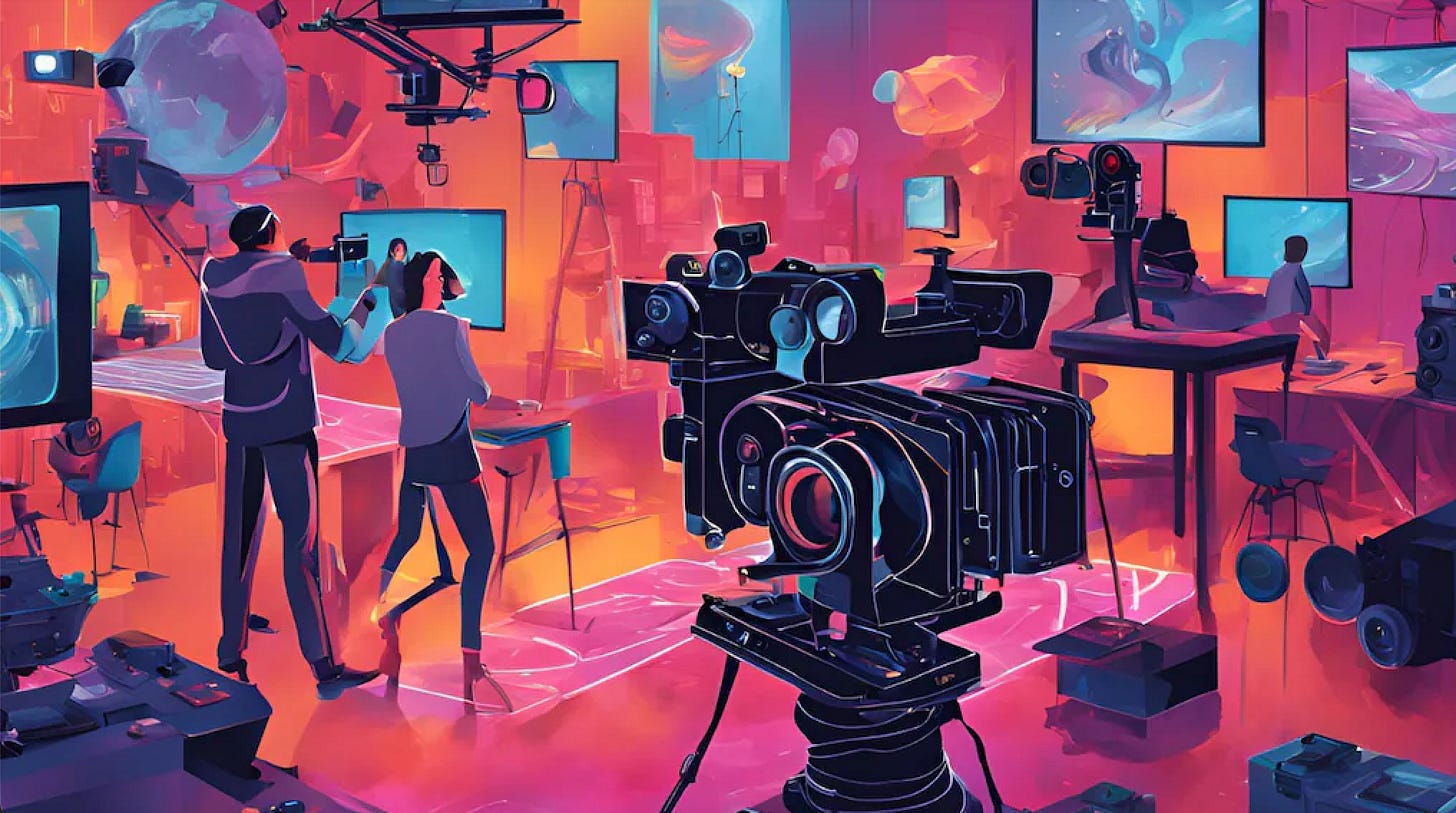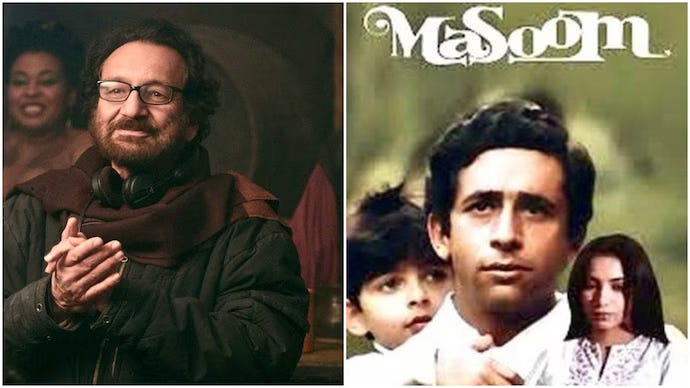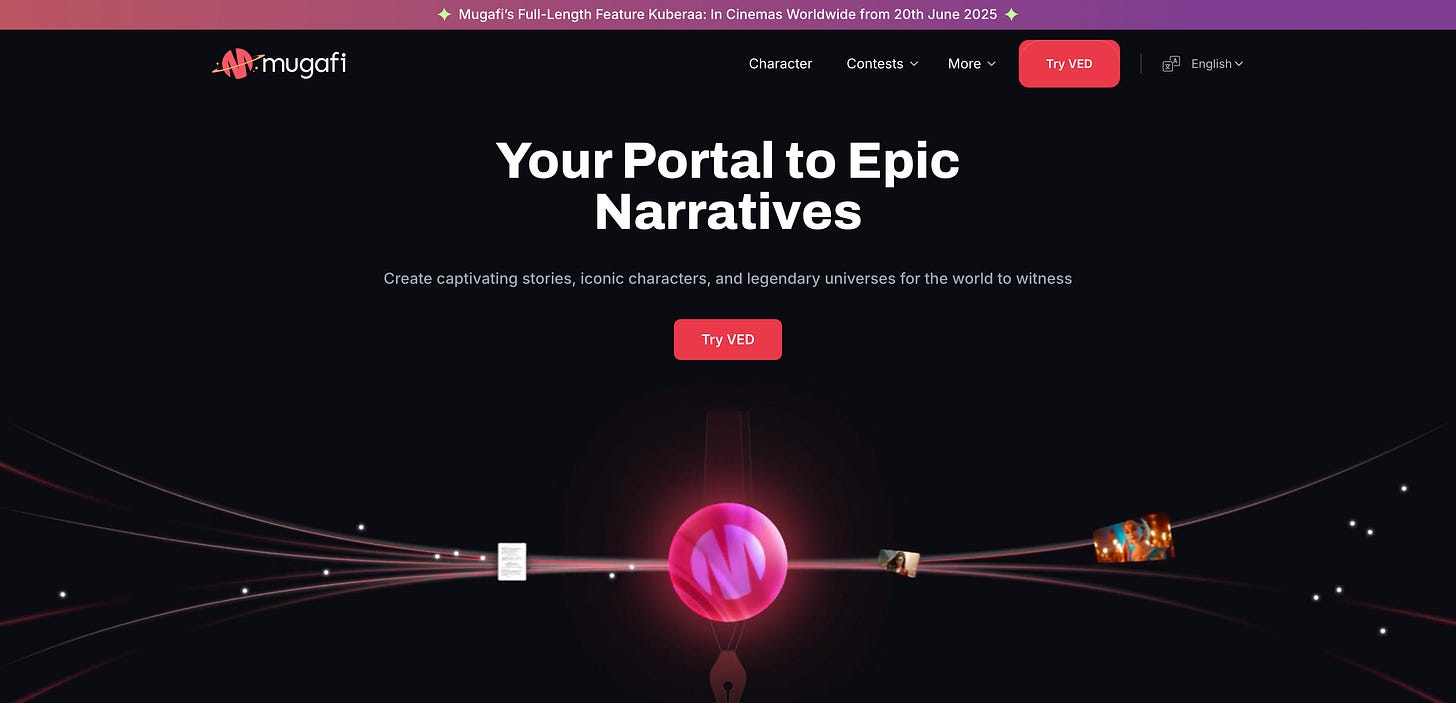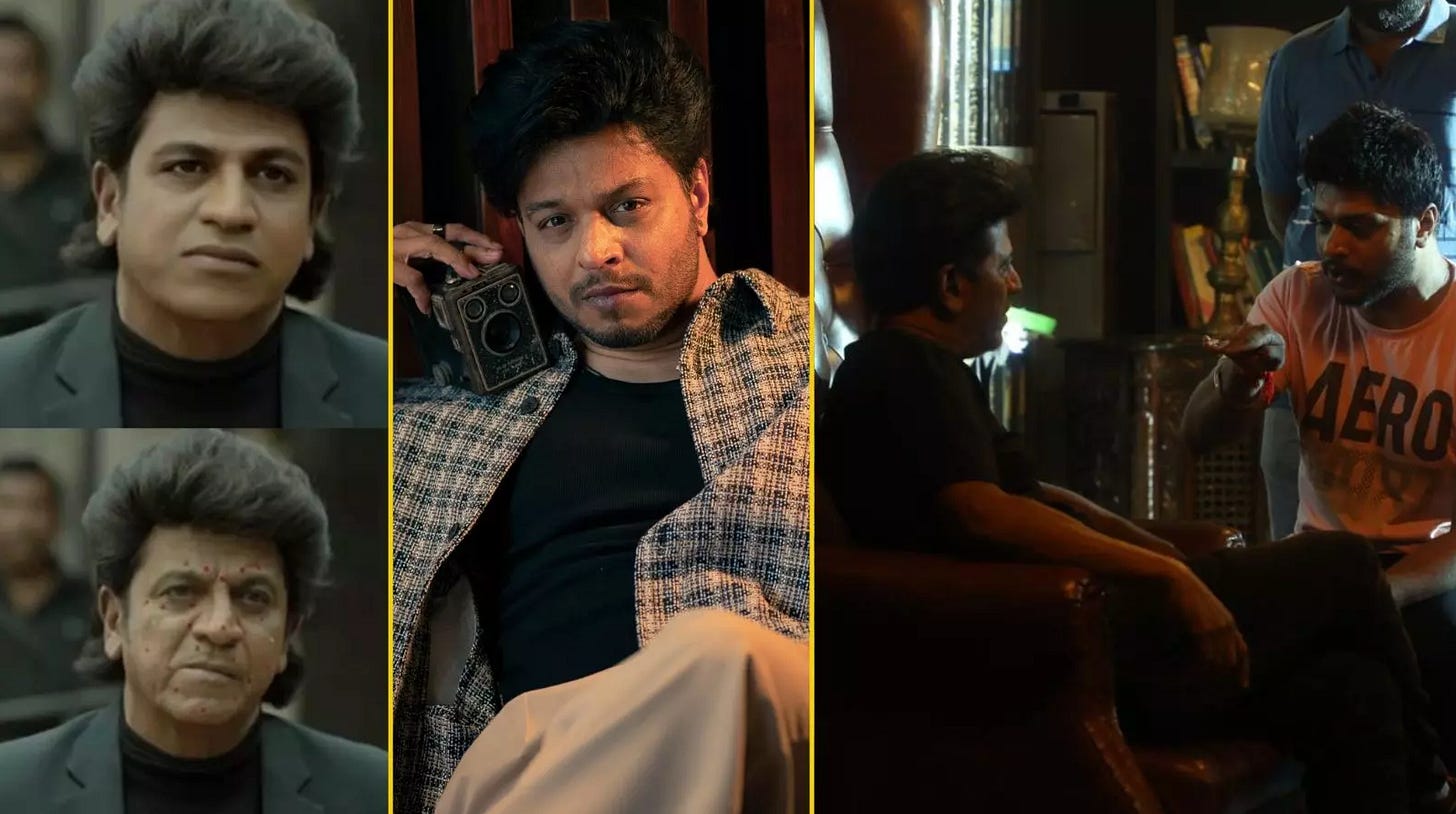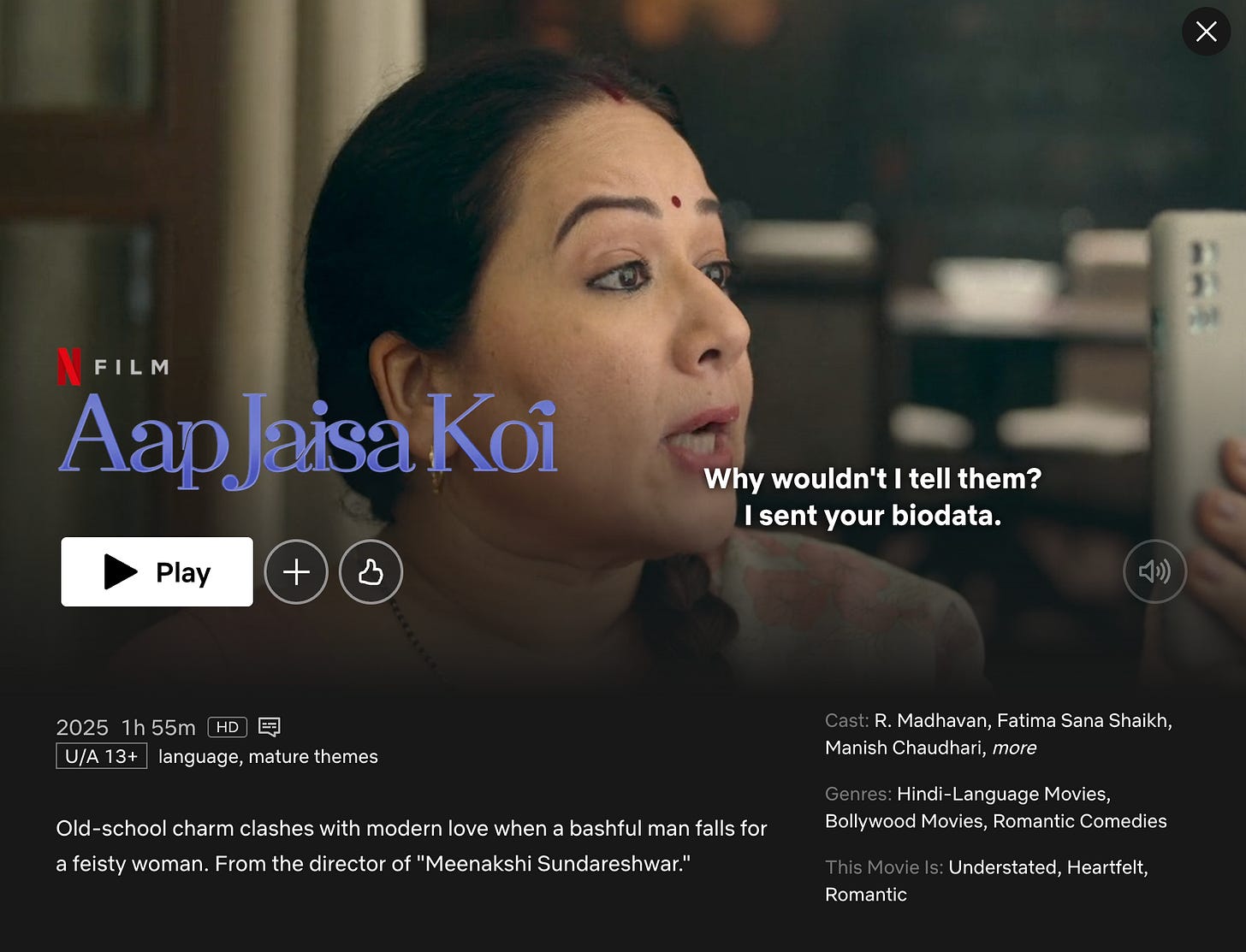Lights, Camera, Algorithm: How AI Is Rewriting Indian Filmmaking
Generative tools slash costs, speed shoots, and unlock multilingual streaming—while creators stay in control.
Hey Streamers 👋,
A warm welcome to the 94th edition of the “Streaming in India” newsletter, your weekly news digest about streaming players, OTT trends, and analyses. If you are not already a subscriber, please sign up and join thousands of others who receive it directly in their inbox every Wednesday.
Agenda
AI in Indian Filmmaking: Innovations and Insights
Pioneering Experiments in India
AI Tools Across the Pipeline
Voices from India’s Film Community
Cultural Storytelling & Local Innovation
Challenges and Ethics
Looking Ahead
And….Action!
AI in Indian Filmmaking: Innovations and Insights
Global Trends and Outlook. Artificial intelligence is transforming every stage of media production and distribution. An industry report projects the global AI-in-film market growing from about $1.28 billion in 2024 to $1.60 billion in 2025, and nearly $3.75 billion by 2029 [einpresswire.com]. Streaming platforms are a major driver: a 2024 Nielsen study found that streaming now accounts for over 40% of TV viewing [einpresswire.com], pushing companies worldwide to use AI for content creation, personalization and analytics. In India, filmmakers and studios are closely watching these trends. From Mumbai to Bengaluru, creators see AI as a way to speed up production and cut costs while keeping creative control. (Much of India’s film industry – Bollywood and the regional cinemas – is increasingly financed by or tied to streaming OTT players, who want faster turnarounds and data-driven hits.)
Pioneering Experiments in India
The first Indian tests of AI-driven filmmaking have already grabbed headlines. Bollywood veteran Shekhar Kapur, for example, surprised many by using ChatGPT to draft a script for Masoom 2, the sequel to his 1983 classic. Kapur found the AI “astonishingly quick” at grasping the story’s themes: it “conjured up a credible moral dilemma” for the protagonist and produced a coherent outline in seconds [m.economictimes.com]. He noted, however, that his human-written story was still better than the AI’s, and reminded everyone that an AI chatbot “does not see video” or feel emotions. This experiment illustrated how AI can spark ideas and even lay out basic plots – but human writers remain essential for nuance.
Renowned filmmaker Shekhar Kapur publicly tested ChatGPT for screenwriting. He praised its ability to generate a plausible plot outline (“a credible moral dilemma… in 30 secs”m.economictimes.com) but quipped that “my story is far better than AI’s.” Even so, his experiment signals a new era where Indian directors will routinely use AI as a creative assistant.
Another milestone came with Naisha, billed by its director Vivek Anchalia as “India’s first full-length AI film.” Anchalia began by making an AI-generated music video, which organically grew into an entire movie project. He spent over 1,500 hours training AI tools to create the story, characters and visuals. Remarkably, Anchalia estimates Naisha cost “less than 5%” of what a comparable conventional production would have. He used tools like Midjourney, Luma and Runway to render locations, characters and even lighting, iterating relentlessly until the AI output met his vision.
Anchalia admits the process was painstaking: achieving character continuity (“the same face” across frames) was a “major roadblock” that only resolved after many hours of fine-tuning prompts [thefederal.com]. Still, he believes the technology is improving so fast that true consistency will soon be just “a click” away. These pioneering projects prove that generative AI can dramatically cut budgets in India.
AI Tools Across the Pipeline
AI is finding roles at every stage of production. Bullet points below summarize some key tools and applications:
Scriptwriting & Writing Aids: Chatbots and AI assistants now help writers brainstorm scenes and dialogue. Global models like GPT-3 are widely used, and Indian companies are building localized tools. For example, Mugafi is an AI-powered screenwriting platform tailored for Indian scripts (it supports Hindi, Tamil, Telugu etc., and adapts to regional formats and storytelling nuances). Such tools offer real-time suggestions, correct grammar, and even nudge writers out of blocks – all while preserving the writer’s unique voice.
Pre-Production & Storyboarding: AI can generate quick visuals of scenes, characters or full storyboards. As producer Siddharth Roy Kapur notes, AI allows an “audio-visual representation of the storyboard” that used to take months manually. Filmmakers describe AI storyboarding tools that turn scripts into images, concept art or animatics almost instantly. Location scouting and casting can also be aided by AI databases and image generators, speeding up planning.
Cinematography & Virtual Cameras: Intelligent camera rigs and software can autonomously frame shots and follow action. For instance, Motion Impossible and Kodak have developed AI-driven camera systems that can track actors or execute complex moves without a human operator. In India, directors experimenting with motion capture and virtual production (LED volumes) are beginning to integrate AI controls for real-time lighting and perspective, lowering the cost of big set pieces.
Visual Effects & CG: Deep learning is now ubiquitous in VFX. AI algorithms can generate hyper-realistic backgrounds, digitally de-age actors or create fantastical elements with far less manual artistry. (Kannada director MG Srinivas cites Hollywood examples like Gemini Man and local films Kalki and Goa that used AI-assisted de-aging, though with some flaws [thefederal.com].) In India’s rich mythological and sci-fi genres, such AI-powered CGI is invaluable for crafting otherworldly visuals on tighter budgets. Adobe, NVIDIA and startups like Flawless AI and DeepDub are among the tech leaders here.
Editing & Post-Production: AI-driven editing tools can scan hours of footage and suggest cuts, pacing and even highlight best takes. According to Maya Films, automated editing assistants analyze clips to propose a rough cut, saving editors countless hours. Color grading and pattern recognition can be done by neural nets, speeding up post. Indian editors are beginning to use tools like Runway ML and Adobe Sensei to accelerate VFX compositing and rotoscoping.
Audio, Dubbing & Music: Perhaps the most visible AI use in India is in sound. Advanced voice-cloning enables seamless dubbing of films into multiple languages. Kannada star Shiva Rajkumar’s voice, for instance, has been AI-cloned for Telugu, Tamil and Hindi dubs of his movies. MG Srinivas even launched AI Samhitha, a studio offering such AI dubbing services; he says there’s huge demand from big-budget films being released across languages [thefederal.com]. Music too is touched by AI: producers like Siddharth Tewary have created AI-generated devotional songs (for Krishna Janmashtami and Ganesh Chaturthi) that maintain emotional depth while drastically cutting production time and cost.
Voices from India’s Film Community
Leading Indian filmmakers and analysts offer mixed but optimistic views. Kannada director MG Srinivas (of Ghost and Birbal) calls the advent of AI “a tectonic shift” in our industry, saying, “We’ve had constant shifts in technology in films. Now, it is AI, and frankly filmmakers need to adapt and upgrade themselves.” [thefederal.com]. He used AI to de-age his lead actor and to clone the actor’s voice for multilingual dubbing. Srinivas also notes a practical benefit: “It has become easier to show an AI-generated visual of what I want, to ensure we are all on the same page”. In other words, ideas that were once sketches can now be quickly rendered for the whole crew.
Screenwriter Sumit Purohit (of Scam 1992) cautions that AI tools still have limits. Continuity is a challenge: AI “struggles to recognise the same character in subsequent frames” [thefederal.com], so his team often uses short AI-generated clips for pitches or trailers, not full scenes. But he adds that AI is already useful in drafting trailer visuals and even assisting script sections. “It’s good as a writing assistant as well,” he says. Production planners likewise welcome AI. Chaitanya Chinchlikar of Whistling Woods explains that AI has already entered workflows for pre-visualization, scheduling and background scoring [thefederal.com]. With more India-specific data fed into these tools, they only become more effective for local stories.
Critic Fenil Seta notes that AI can make stars multilingual: “Imagine Shah Rukh Khan talking in Spanish… that’s what AI is helping with now.” [storyboard18.com]. He believes this lowers distribution barriers. Seta also stresses AI’s job-creating side: by cutting production time, “AI will help filmmakers create films at a lesser cost and in lesser time… more avenues will open up so people will get employment, contrary to the belief that it will take jobs away.”. Veteran cinematographer Santosh Sivan echoes this hopeful stance: “AI should be enhancing a film or a piece of art… AI is a technical assistant. It won’t do anything unless a coder tells it to.” [theprint.in]. In short, most Indian filmmakers see AI as a powerful tool to enhance – not replace – human creativity.
Cultural Storytelling & Local Innovation
Some Indian creators are even using AI to revive cultural narratives. Bengaluru’s MAYA Films has a dedicated “MAYA AI” arm that applies AI to heritage projects. For instance, their “Echoes of Freedom” documentary re-imagines India’s 1947 Independence Day through AI. They generated over 2,000 images (many guided by historical photographs and descriptions) to weave a new visual experience of that moment. Importantly, Maya stresses human oversight: their team meticulously checked AI outputs for cultural accuracy, and reframed prompts when the AI “struggled” with Indian historical detail. These examples show AI’s promise in crafting immersive historical stories, provided creators remain conscientious about context and authenticity.
Challenges and Ethics
With great power comes concern. Indian filmmakers are keenly aware of the ethical questions AI poses. Anchalia points out that he never prompts the AI with a real star’s name, to respect privacy and fair use: he only uses generic character descriptions (e.g. “a 22-year-old Bengali woman in traditional dress”) when generating protagonists [thefederal.com]. He and others leave actual actors, musicians and writers in the loop whenever possible. Indeed, Indian law already offers protections: as industry lawyers note, court rulings (like the Amitabh Bachchan case) clearly prohibit unauthorised use of a performer’s likeness or voice [thefederal.com]. So far, Bollywood studios have not faced lawsuits over AI – but many expect the issue to be addressed soon.
Creators also worry that AI content could become formulaic or infringe copyright. Film-maker Abhishek Jain comments that AI’s “ruthless feedback” can sharpen a script without diluting creativity [storyboard18.com]. Fenil Seta emphasizes that AI should be seen as an enhancer: “AI will in no way replace human creativity,” he says – instead it can streamline routines and let artists focus on vision. In practice, most projects we’ve seen use human actors for final performances and composers for music, even if visuals are AI-generated [theprint.in]. The prevailing attitude is that the soul of a film must come from people, not machines.
Looking Ahead
The pace of change is breathtaking. Big tech continues to push AI video tools rapidly. For example, in late 2024 Meta introduced MovieGen, a research system that creates short videos from text prompts [einpresswire.com]. When such capabilities mature, Indian filmmakers will have even more freedom to visualize any idea.
In the near term, both indie and studio filmmakers stand to benefit. Major studios (like Prime Focus) will likely adopt AI to speed up their visual effects. On the OTT side, streaming platforms already use AI-driven editing and promotional tools to tailor content for millions of subscribers. With India’s massive audiences, local streamers may start using AI for targeted trailers, multilingual releases and even new forms of interactive storytelling.
Bottom line: AI is becoming an integral part of India’s filmmaking toolbox. Our creators—from directors to editors to VFX artists—are experimenting with it in every department. So far, the emerging consensus is clear: use AI to amplify human creativity, not replace it. As we’ve seen, when used thoughtfully it can democratize production (empowering smaller teams) and enrich storytelling (bringing new worlds and heritage to life). Streaming professionals should watch these developments closely. The next few years may bring generative TV series, AI-written scripts, or voice-cloned premieres – but success will belong to those who steer the technology wisely, ensuring the human touch remains at the heart of cinema.
One of the better Netflix movies coming out of India - Aap Jaisa Koi gets South Indian star R. Madhavan flexing his Hindi for a Bollywood movie that is more than a love story - it’s a mirror held up to your beliefs, blind spots, and inherited behavior.
Streaming in India is a weekly newsletter exploring the trends that matter to streaming professionals in India. If you are not already a subscriber, sign up and join several others who receive it directly in their inbox every Wednesday.
Please sign up for my other newsletter focused on “eyeball economy” focused startups (Media, Entertainment, Gaming, Ad Tech & Sports), the Indian / Middle East startup and venture capital ecosystem; in your inbox every Monday: Mehtta Ventures Dubai.
I represent the Adsolut Media business in the Middle East and am a “board observer” for their growth. We have amongst the largest supply of Connected Television premium inventory in the Middle East - Sub-continental corridor along with one of the largest mobile / web inventories as well. Please get in touch for your monetization requirements.



